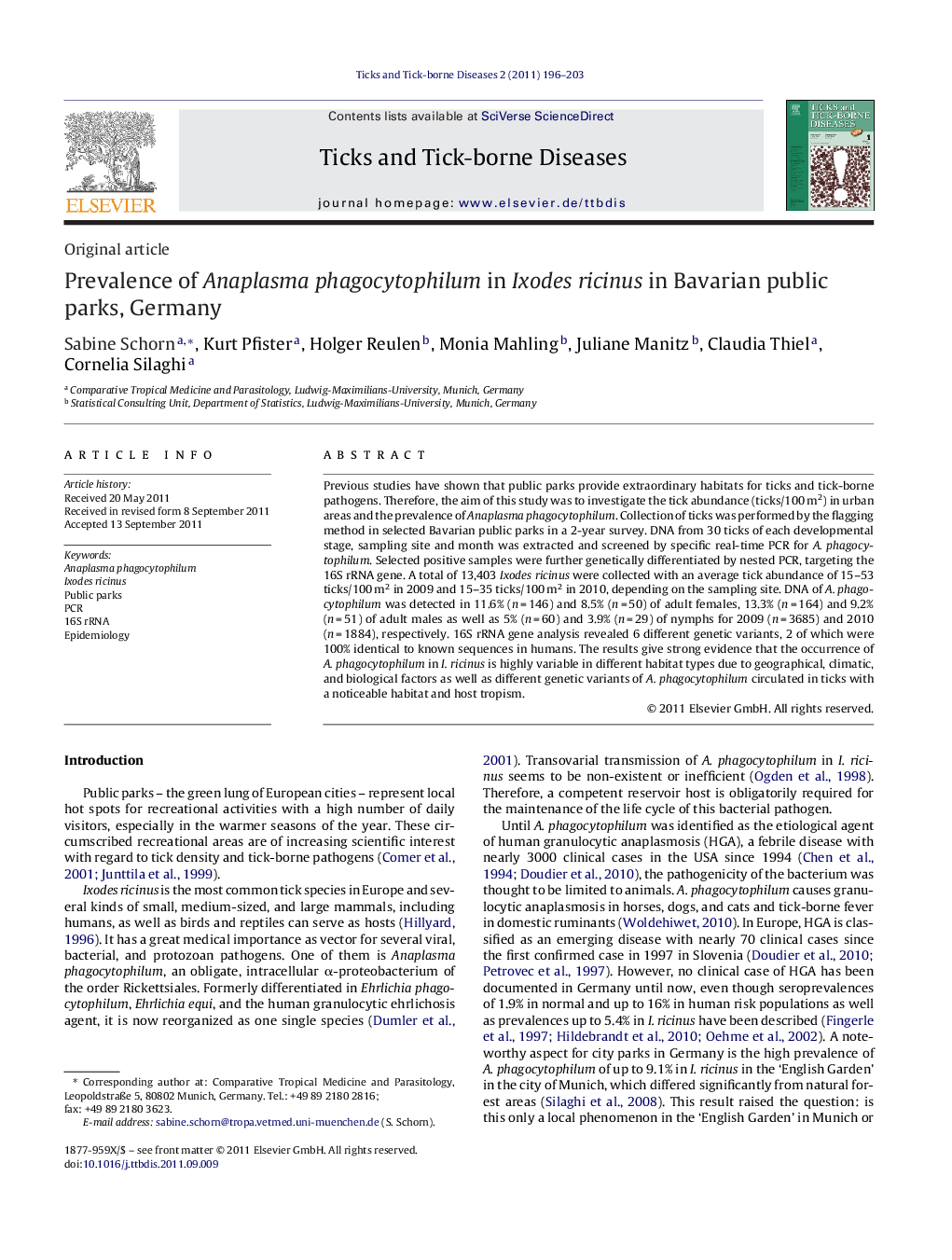| Article ID | Journal | Published Year | Pages | File Type |
|---|---|---|---|---|
| 2474292 | Ticks and Tick-borne Diseases | 2011 | 8 Pages |
Previous studies have shown that public parks provide extraordinary habitats for ticks and tick-borne pathogens. Therefore, the aim of this study was to investigate the tick abundance (ticks/100 m2) in urban areas and the prevalence of Anaplasma phagocytophilum. Collection of ticks was performed by the flagging method in selected Bavarian public parks in a 2-year survey. DNA from 30 ticks of each developmental stage, sampling site and month was extracted and screened by specific real-time PCR for A. phagocytophilum. Selected positive samples were further genetically differentiated by nested PCR, targeting the 16S rRNA gene. A total of 13,403 Ixodes ricinus were collected with an average tick abundance of 15–53 ticks/100 m2 in 2009 and 15–35 ticks/100 m2 in 2010, depending on the sampling site. DNA of A. phagocytophilum was detected in 11.6% (n = 146) and 8.5% (n = 50) of adult females, 13.3% (n = 164) and 9.2% (n = 51) of adult males as well as 5% (n = 60) and 3.9% (n = 29) of nymphs for 2009 (n = 3685) and 2010 (n = 1884), respectively. 16S rRNA gene analysis revealed 6 different genetic variants, 2 of which were 100% identical to known sequences in humans. The results give strong evidence that the occurrence of A. phagocytophilum in I. ricinus is highly variable in different habitat types due to geographical, climatic, and biological factors as well as different genetic variants of A. phagocytophilum circulated in ticks with a noticeable habitat and host tropism.
